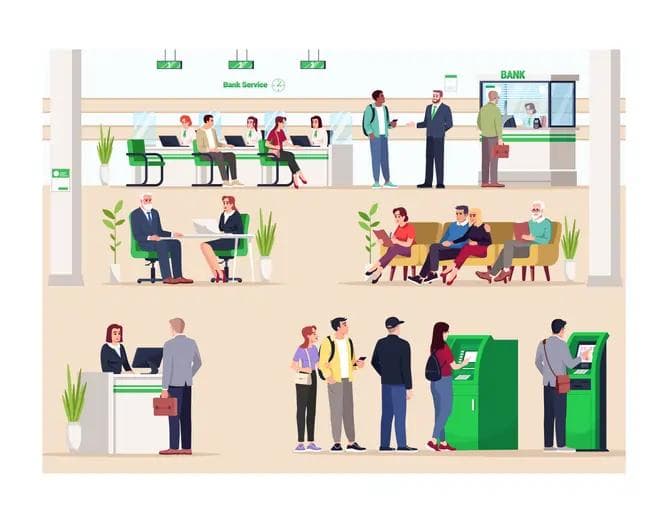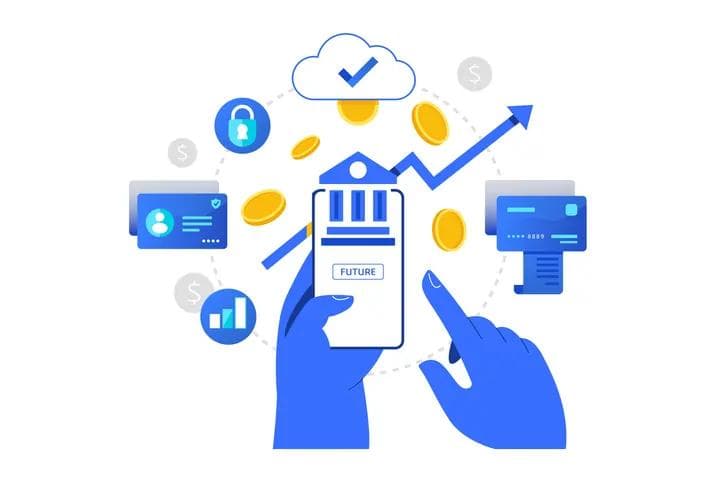Peer-to-Peer Lending Trends 2025
Peer-to-Peer Lending Trends 2025
Published by Jessica Weisman-Pitts
Posted on February 12, 2025

Published by Jessica Weisman-Pitts
Posted on February 12, 2025

The Evolution of Peer-to-Peer Lending: A 2025 Perspective
In the ever-evolving landscape of financial services, peer-to-peer (P2P) lending has emerged as a formidable force, reshaping how individuals and businesses access capital. As we delve into 2025, the P2P lending market is not only thriving but also undergoing significant transformations driven by technological advancements, regulatory changes, and shifting consumer preferences.
A Market on the Rise
The global P2P lending market is experiencing unprecedented growth. With projections indicating a market size of $176.5 billion in 2025, and an expected surge to $1,380.80 billion by 2034, the sector is poised for a compound annual growth rate (CAGR) of 25.73% from 2025 to 2034, according to Precedence Research. This remarkable expansion underscores the increasing demand for alternative financing solutions, particularly among small and medium-sized enterprises (SMEs) and individuals with limited credit histories. The market's growth is fueled by a combination of factors, including technological innovation, regulatory support, and a growing appetite for digital financial services.
Technological Advancements: The Backbone of Growth
One of the most compelling aspects of P2P lending's evolution is the integration of cutting-edge technologies. Blockchain technology, for instance, has become integral to P2P platforms, enhancing transaction security and enabling smart contracts that automate loan agreements, as noted by 1Finance. This not only ensures the immutability of transactions but also fosters trust among participants. Blockchain's decentralized nature eliminates the need for intermediaries, reducing costs and increasing efficiency.
Moreover, AI-powered credit scoring is revolutionizing how creditworthiness is assessed. By leveraging non-traditional data points, such as social behavior and transaction history, AI algorithms provide a more inclusive and accurate assessment of borrowers, as highlighted by 1Finance. This technological leap is making the financial system more accessible to those previously underserved by traditional banks. AI's ability to analyze vast amounts of data quickly and accurately is transforming risk assessment, enabling lenders to make more informed decisions.
The Allure of Higher Returns
In a world where interest rates remain relatively low, P2P lending offers an attractive proposition for investors seeking higher yields. With potential returns ranging from 6% to 12%, P2P platforms are drawing investors who are eager to diversify their portfolios and capitalize on advanced risk-assessment tools, according to 1Finance. This trend is further bolstered by the increasing sophistication of data analysis techniques, which help mitigate risks and enhance investment outcomes. Investors are increasingly drawn to P2P lending as a means of achieving higher returns in a low-yield environment, with platforms offering a range of investment options to suit different risk appetites.
Navigating the Regulatory Landscape
The regulatory environment plays a pivotal role in shaping the P2P lending market. In North America, a more conducive regulatory framework has facilitated smoother operations, attracting both borrowers and investors, as reported by Precedence Research. Meanwhile, the Asia-Pacific region, particularly China, is witnessing rapid growth driven by supportive government policies and the promotion of cashless technologies, according to IMARC Group. Regulatory clarity and support are crucial for the continued growth of the P2P lending market, providing a stable environment for innovation and expansion.
Diversification and Innovation
P2P platforms are not resting on their laurels. Instead, they are diversifying their product offerings to cater to a broader audience. From personal loans and small business financing to student loans and niche sectors like renewable energy financing, P2P platforms are expanding their reach and impact, as noted by Research and Markets. This diversification not only enhances the platforms' appeal but also contributes to their resilience in a competitive market. By offering a wide range of products, P2P platforms can attract a diverse customer base and tap into new revenue streams.
Digital Adaptations and Fintech Innovations
The digital revolution is at the heart of the P2P lending market's expansion. The rise of mobile money and decentralized finance (DeFi) platforms is driving growth by offering decentralized and transparent financial solutions, as highlighted by TBRC. These innovations are not only enhancing the efficiency of P2P platforms but also broadening their appeal to a tech-savvy audience. The integration of digital technologies is transforming the customer experience, making it easier and more convenient for users to access financial services.
The Role of Blockchain and AI
Blockchain technology continues to be a game-changer for P2P lending platforms. By ensuring transaction security and enabling smart contracts, blockchain fosters trust and transparency among participants, as noted by 1Finance. Meanwhile, AI-powered credit scoring is revolutionizing the assessment of creditworthiness. By considering non-traditional data points, AI algorithms provide a more inclusive and accurate evaluation of borrowers, thus democratizing access to credit, as highlighted by 1Finance. The combination of blockchain and AI is creating a more efficient and secure lending environment, reducing the risk of fraud and improving the accuracy of credit assessments.
Regulatory Environment: A Double-Edged Sword
The regulatory landscape is a critical factor in the P2P lending market's trajectory. In North America, a favorable regulatory environment has facilitated smoother operations, attracting both borrowers and investors, as reported by Precedence Research. Conversely, the Asia-Pacific region, particularly China, is experiencing rapid growth due to supportive economic policies and government initiatives promoting cashless technologies, according to IMARC Group. While regulatory support is essential for growth, it also presents challenges, as platforms must navigate complex legal frameworks and ensure compliance with evolving regulations.
Increased Accessibility and Higher Returns
P2P lending platforms are providing an alternative source of capital for SMEs and individuals with limited credit histories. By offering simplified application processes and faster loan disbursement, these platforms are democratizing access to credit, as noted by 1Finance. For investors, P2P lending offers higher yields, especially in a low-interest-rate environment. Advanced risk-assessment tools help mitigate risks, providing steady returns, as highlighted by IMARC Group. The accessibility and potential for higher returns make P2P lending an attractive option for both borrowers and investors, driving continued growth in the market.
Diversification and Product Innovation
P2P platforms are diversifying their offerings to cater to a broader audience. From personal loans and small business financing to student loans and niche sectors like renewable energy financing, P2P platforms are expanding their reach and impact, as noted by Research and Markets. This diversification not only enhances the platforms' appeal but also contributes to their resilience in a competitive market. By offering a wide range of products, P2P platforms can attract a diverse customer base and tap into new revenue streams.
A Promising Future
The P2P lending market in 2025 is a testament to the power of innovation and adaptability. As technological advancements continue to reshape the financial landscape, P2P platforms are well-positioned to meet the evolving needs of borrowers and investors alike. With a robust regulatory framework and a commitment to diversification, the future of P2P lending looks promising, offering a viable alternative to traditional financial systems. The continued growth and evolution of the P2P lending market will depend on the ability of platforms to innovate, adapt to changing market conditions, and meet the needs of a diverse customer base.
Explore more articles in the Banking category











